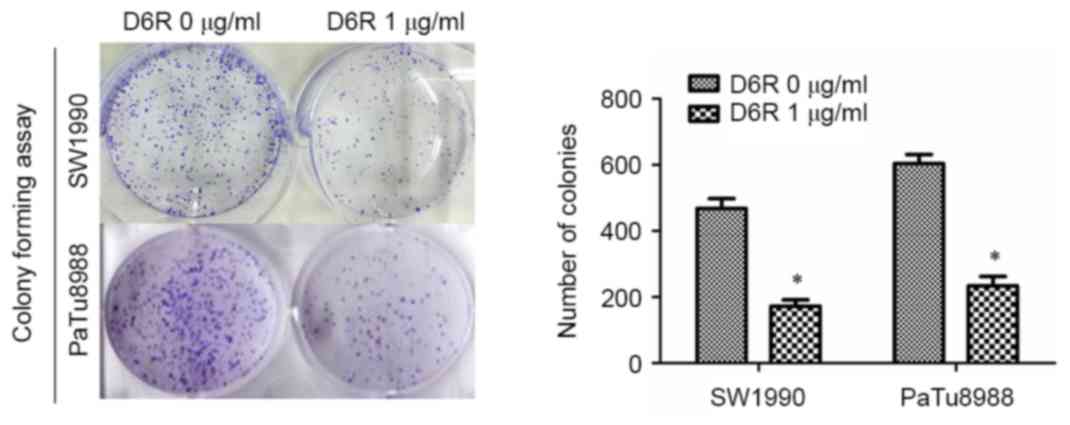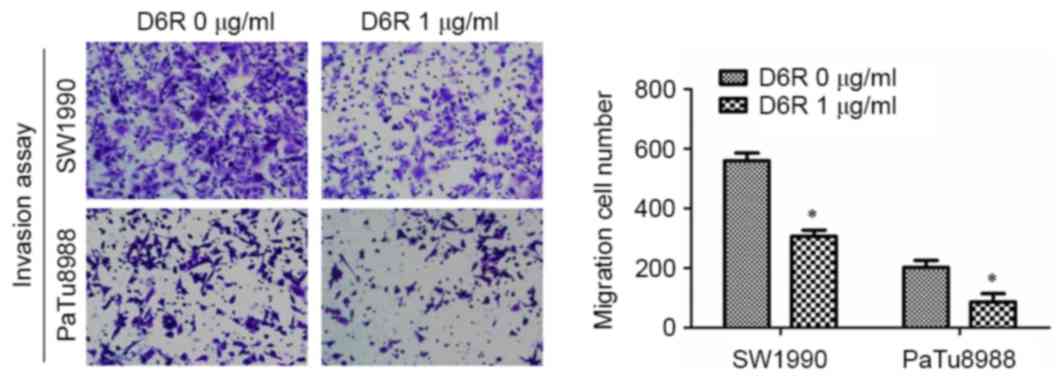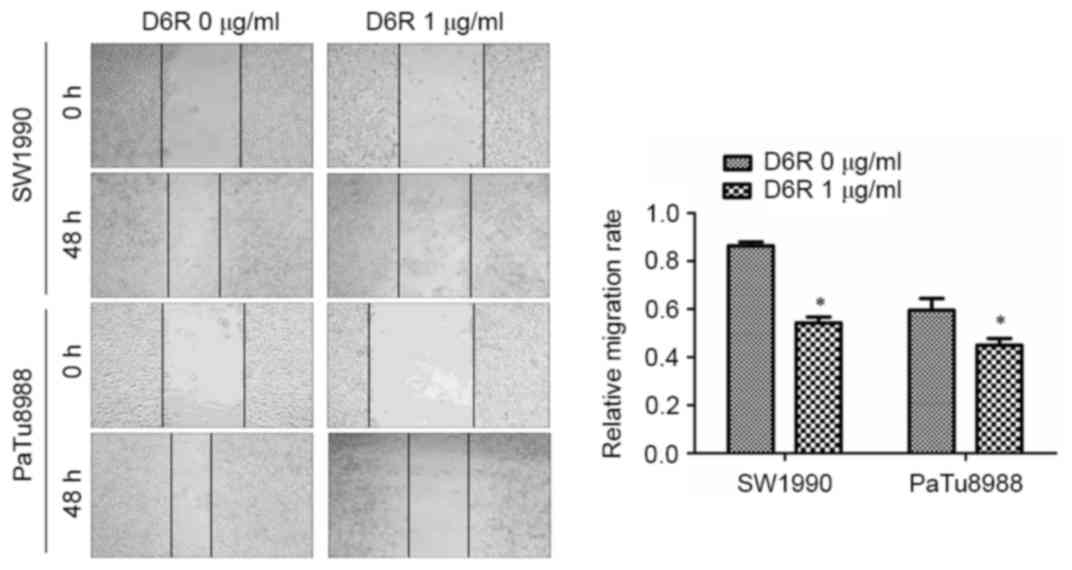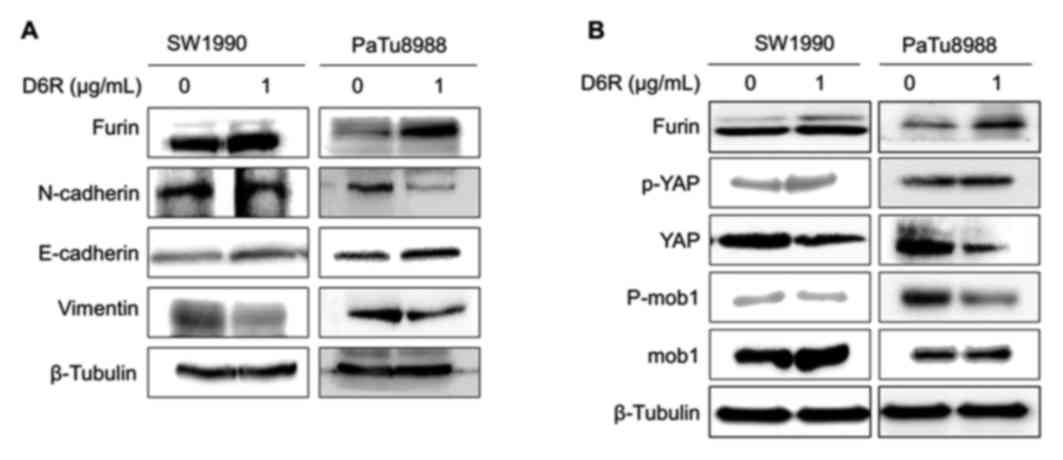|
1
|
Bassi DE, Mahloogi H and Klein-Szanto AJ:
The proprotein convertases furin and PACE4 play a significant role
in tumor progression. Mol Carcinog. 28:63–69. 2000. View Article : Google Scholar : PubMed/NCBI
|
|
2
|
Pei D and Weiss SJ: Furin-dependent
intracellular activation of the human stromelysin-3 zymogen.
Nature. 375:244–247. 1995. View
Article : Google Scholar : PubMed/NCBI
|
|
3
|
Shiryaev SA, Remacle AG, Ratnikov BI,
Nelson NA, Savinov AY, Wei G, Bottini M, Rega MF, Parent A,
Desjardins R, et al: Targeting host cell furin proprotein
convertases as a therapeutic strategy against bacterial toxins and
viral pathogens. J Biol Chem. 282:20847–20853. 2007. View Article : Google Scholar : PubMed/NCBI
|
|
4
|
Becker GL, Lu Y, Hardes K, Strehlow B,
Levesque C, Lindberg I, Sandvig K, Bakowsky U, Day R, Garten W and
Steinmetzer T: Highly potent inhibitors of proprotein convertase
furin as potential drugs for treatment of infectious diseases. J
Biol Chem. 287:21992–22003. 2012. View Article : Google Scholar : PubMed/NCBI
|
|
5
|
Thomas G: Furin at the cutting edge: From
protein traffic to embryogenesis and disease. Nat Rev Mol Cell
Biol. 3:753–766. 2002. View
Article : Google Scholar : PubMed/NCBI
|
|
6
|
Dubois CM, Blanchette F, Laprise MH, Leduc
R, Grondin F and Seidah NG: Evidence that furin is an authentic
transforming growth factor-beta1-converting enzyme. Am J Pathol.
158:305–316. 2001. View Article : Google Scholar : PubMed/NCBI
|
|
7
|
Yana I and Weiss SJ: Regulation of
membrane type-1 matrix metalloproteinase activation by proprotein
convertases. Mol Biol Cell. 11:2387–2401. 2000. View Article : Google Scholar : PubMed/NCBI
|
|
8
|
López de Cicco R, Watson JC, Bassi DE,
Litwin S and Klein-Szanto AJ: Simultaneous expression of furin and
vascular endothelial growth factor in human oral tongue squamous
cell carcinoma progression. Clin Cancer Res. 10:4480–4488. 2004.
View Article : Google Scholar : PubMed/NCBI
|
|
9
|
Pang YJ, Tan XJ, Li DM, Zheng ZH, Lei RX
and Peng XM: Therapeutic potential of furin inhibitors for the
chronic infection of hepatitis B virus. Liver Int. 33:1230–1238.
2013. View Article : Google Scholar : PubMed/NCBI
|
|
10
|
Bassi DE, Lopez De Cicco R, Mahloogi H,
Zucker S, Thomas G and Klein-Szanto AJ: Furin inhibition results in
absent or decreased invasiveness and tumorigenicity of human cancer
cells. Proc Natl Acad Sci USA. 98:pp. 10326–10331. 2001; View Article : Google Scholar : PubMed/NCBI
|
|
11
|
Coppola JM, Bhojani MS, Ross BD and
Rehemtulla A: A small-molecule furin inhibitor inhibits cancer cell
motility and invasiveness. Neoplasia. 10:363–370. 2008. View Article : Google Scholar : PubMed/NCBI
|
|
12
|
Cameron A, Appel J, Houghten RA and
Lindberg I: Polyarginines are potent furin inhibitors. J Biol Chem.
275:36741–36749. 2000. View Article : Google Scholar : PubMed/NCBI
|
|
13
|
Komiyama T, Swanson JA and Fuller RS:
Protection from anthrax toxin-mediated killing of macrophages by
the combined effects of furin inhibitors and chloroquine.
Antimicrob Agents Chemother. 49:3875–3882. 2005. View Article : Google Scholar : PubMed/NCBI
|
|
14
|
Ozden S, Lucas-Hourani M, Ceccaldi PE,
Basak A, Valentine M, Benjannet S, Hamelin J, Jacob Y, Mamchaoui K,
Mouly V, et al: Inhibition of Chikungunya virus infection in
cultured human muscle cells by furin inhibitors: Impairment of the
maturation of the E2 surface glycoprotein. J Biol Chem.
283:21899–21908. 2008. View Article : Google Scholar : PubMed/NCBI
|
|
15
|
Sarac MS, Cameron A and Lindberg I: The
furin inhibitor hexa-D-arginine blocks the activation of
Pseudomonas aeruginosa exotoxin A in vivo. Infect Immun.
70:7136–7139. 2002. View Article : Google Scholar : PubMed/NCBI
|
|
16
|
Wolfgang CL, Herman JM, Laheru DA, Klein
AP, Erdek MA, Fishman EK and Hruban RH: Recent progress in
pancreatic cancer. CA Cancer J Clin. 63:318–348. 2013. View Article : Google Scholar : PubMed/NCBI
|
|
17
|
Reubi JC: Peptide receptors as molecular
targets for cancer diagnosis and therapy. Endocr Rev. 24:389–427.
2003. View Article : Google Scholar : PubMed/NCBI
|
|
18
|
Khatib AM, Siegfried G, Prat A, Luis J,
Chrétien M, Metrakos P and Seidah NG: Inhibition of proprotein
convertases is associated with loss of growth and tumorigenicity of
HT-29 human colon carcinoma cells: Importance of insulin-like
growth factor-1 (IGF-1) receptor processing in IGF-1-mediated
functions. J Biol Chem. 276:30686–30693. 2001. View Article : Google Scholar : PubMed/NCBI
|
|
19
|
Longuespée R, Couture F, Levesque C,
Kwiatkowska A, Desjardins R, Gagnon S, Vergara D, Maffia M,
Fournier I, Salzet M and Day R: Implications of Proprotein
Convertases in Ovarian Cancer Cell Proliferation and Tumor
Progression: Insights for PACE4 as a Therapeutic Target. Transl
Oncol. pii:S1936–5233. 2014.
|
|
20
|
Mercapide J, Lopez De Cicco R, Bassi DE,
Castresana JS, Thomas G and Klein-Szanto AJ: Inhibition of
furin-mediated processing results in suppression of astrocytoma
cell growth and invasiveness. Clin Cancer Res. 8:1740–1746.
2002.PubMed/NCBI
|
|
21
|
Maquoi E, Noël A, Frankenne F, Angliker H,
Murphy G and Foidart JM: Inhibition of matrix metalloproteinase 2
maturation and HT1080 invasiveness by a synthetic furin inhibitor.
FEBS Lett. 424:262–266. 1998. View Article : Google Scholar : PubMed/NCBI
|
|
22
|
Angliker H: Synthesis of tight binding
inhibitors and their action on the proprotein-processing enzyme
furin. J Med Chem. 38:4014–4018. 1995. View Article : Google Scholar : PubMed/NCBI
|
|
23
|
Bartholin L: Pancreatic cancer and the
tumor microenvironment: Mesenchyme's role in pancreatic
carcinogenesisPancreatic Cancer and Tumor Microenvironment. Grippo
PJ and Munshi HG: Trivandrum (India): 2012
|
|
24
|
Rasheed ZA, Yang J, Wang Q, Kowalski J,
Freed I, Murter C, Hong SM, Koorstra JB, Rajeshkumar NV, He X, et
al: Prognostic significance of tumorigenic cells with mesenchymal
features in pancreatic adenocarcinoma. J Natl Cancer Inst.
102:340–351. 2010. View Article : Google Scholar : PubMed/NCBI
|
|
25
|
Hotz B, Arndt M, Dullat S, Bhargava S,
Buhr HJ and Hotz HG: Epithelial to mesenchymal transition:
Expression of the regulators snail, slug, and twist in pancreatic
cancer. Clin Cancer Res. 13:4769–4776. 2007. View Article : Google Scholar : PubMed/NCBI
|
|
26
|
Arumugam T, Ramachandran V, Fournier KF,
Wang H, Marquis L, Abbruzzese JL, Gallick GE, Logsdon CD, McConkey
DJ and Choi W: Epithelial to mesenchymal transition contributes to
drug resistance in pancreatic cancer. Cancer Res. 69:5820–5828.
2009. View Article : Google Scholar : PubMed/NCBI
|














